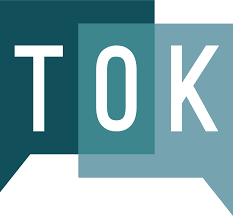Basics Breakdown: What is TOK? (Plus Assessment Overview)
- emadelinelane
- Apr 7, 2024
- 4 min read
Updated: Jan 9
Among the plethora of IB acronyms, you’ve probably heard of TOK at least a
few times. Maybe you talked about it in your Approaches to Learning course, or maybe you just overheard some upperclassmen talking about it. TOK stands for Theory of Knowledge, and is an academic class as well as a principle/idea interwoven throughout IB. I was super confused by all of the terminology at first, but I came out of the program with an A in TOK. Here’s a brief overview of this key tenet of the IB curriculum!
The Class
The most important part of TOK is the actual academic class. Technically, TOK can be completed in a single year, but many schools choose to stretch it out over two years in order to maximize the amount of discussion and information that can be conveyed.
TOK is kind of a mix between philosophy and a research class. Essentially, the course is designed to help us answer the question “how do we know what we know?” by discussing the concept of knowledge as it relates to certain subject areas and aspects of life. The class structure may vary from school to school, but in my experience, most instructional time gets portioned out to each area of knowledge over the course of however long your TOK class is. For example, we might spend 3-4 weeks exploring knowledge in mathematics and then switch gears into history knowledge. This part of TOK explores things like perspective and bias, knowledge acquisition and knowledge transfer across communities. Essentially, you work through these ideas with respect to each area of knowledge.
Depending on the style of your class, class time might also be allocated to working on IB assessments like your EE or updating CAS. This is also the class where you may do CAS meetings or be given time to meet with various IB supervisors. It’s a pretty versatile class overall.
The final thing that you will spend time working on are your TOK Assessments. Yep, they make TOK assessments. Big whoop. There’s two of them: the TOK Exhibition and the TOK Essay. But the good news is that doing well on these exams can help earn you those extra points on your diploma that will help you to graduate. If you haven’t seen the EE/TOK point matrix, I highly recommend looking it up for some clarity. Side note: a lot of kids in my year didn’t realize this until our last semester, but an A in TOK on that matrix comes from your assessment grades, not your report card grades. Very unfortunate, I know.
TOK Exhibition
I did the exhibition in my junior year, although this may vary depending on your class structure. Essentially, the assessment entails choosing a prompt about knowledge from a prescribed list of several. Then, you will choose 3 objects that are personal to you and talk about them with reference to the prompt. For example, the prompt I chose had to do with how we define certainty in knowledge. My three objects were a Bible, a journal, and the door to my seventh grade science classroom. I discussed how the journal represented my own certainty in my thoughts and identity. The door, on the other hand, represented uncertainty in the natural sciences because the teacher I had that year did a really good job of addressing our knowledge limitations. Finally, I discussed religion and how some people are wholly convicted in their religious beliefs while others are more uncertain about the divine aspects of our world.
You will write a brief essay on your objects, but the major event is the actual Exhibition, which is where everyone brings their objects to school along with a poster and presents to the rest of the IB community. Generally, you’re encouraged to bring the actual objects if possible, but obviously I can’t just run off with a door from my middle school, so certain types of objects are permitted to be photos. It’s required that you present your exploration at Exhibition, so make sure to be there!
TOK Essay
The second TOK assessment is called the TOK Essay. At my school, we complete this during senior year, and it's somewhat similar to the Exhibition. Students pick a prompt off of a pre-prescribed list, but this time there are no objects involved. Instead, the prompts relate to specific issues in acquiring, maintaining or transferring knowledge as it relates to certain subjects. For some prompts, these areas of knowledge might be pre-established, but some prompts give students the freedom to choose which areas they would like to discuss. Students then identify real-world examples of the application of their prompt. In my case, my prompt discussed the relationship between subjectivity and history as well as the arts. I argued that subjectivity belonged in both spaces rightfully, and I used case studies like the Dadaist art movement and the first shot at Lexington and Concord to prove my point. This is entirely a research paper, so there are no physical components like the Exhibition.
TOK assessment rubrics are on the vaguer side of IB’s regulations, so sometimes these assessments can be stressful in the sense that the rubric isn't always super concrete. However these are certainly very fun and thought-provoking projects that, when given enough time, will feel more like an interesting study than a chore. These will most likely take up the remaining class time in TOK, and just like that, you’ll be done!
For those wanting examples, my Exhibition and Essay are uploaded below. Exhibition received a B, Essay received an A, which combined for an A in TOK :).


Comments